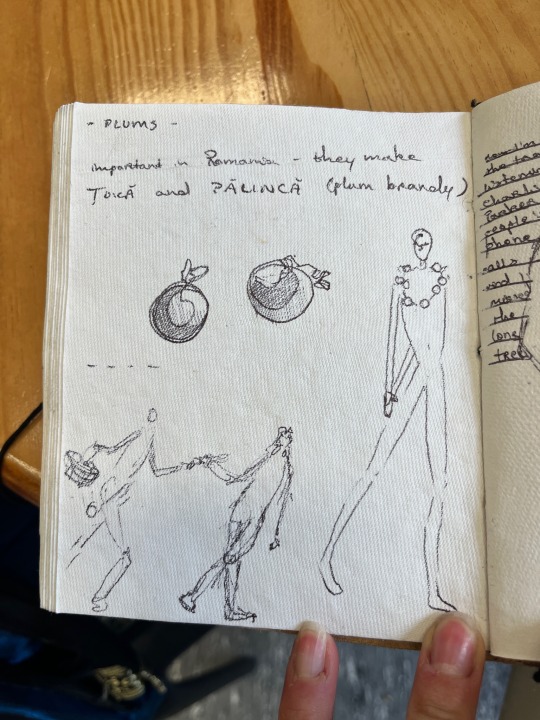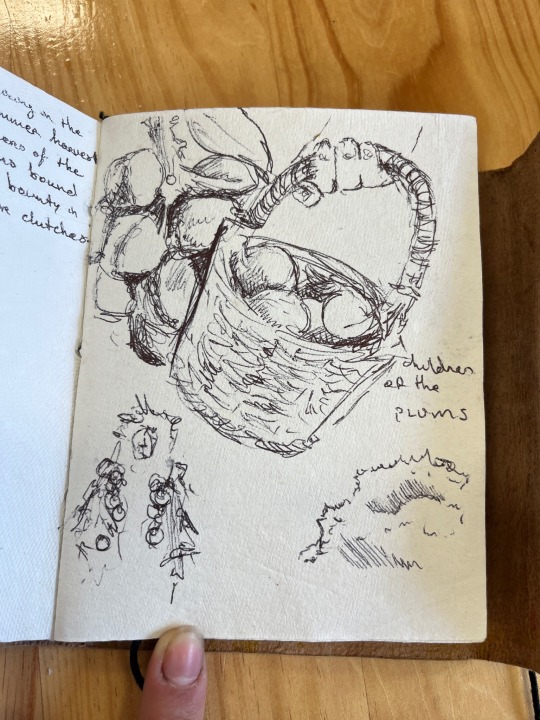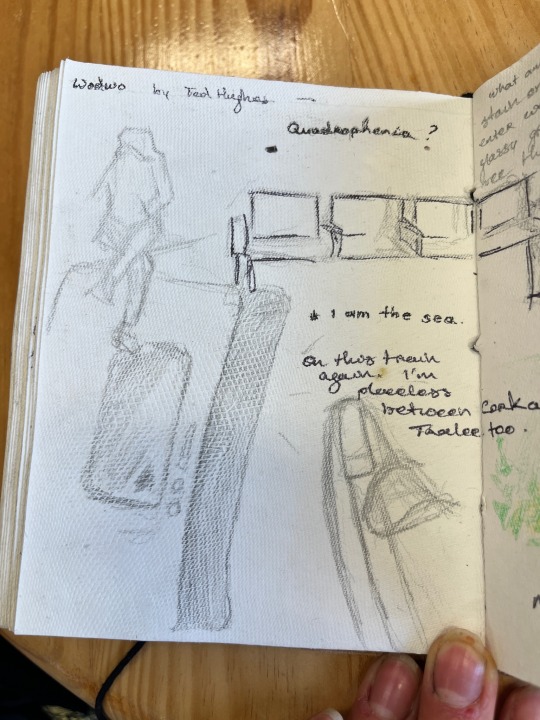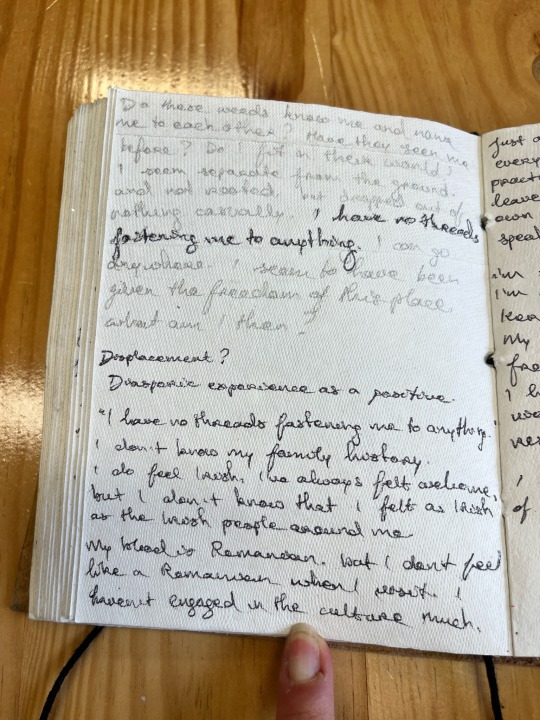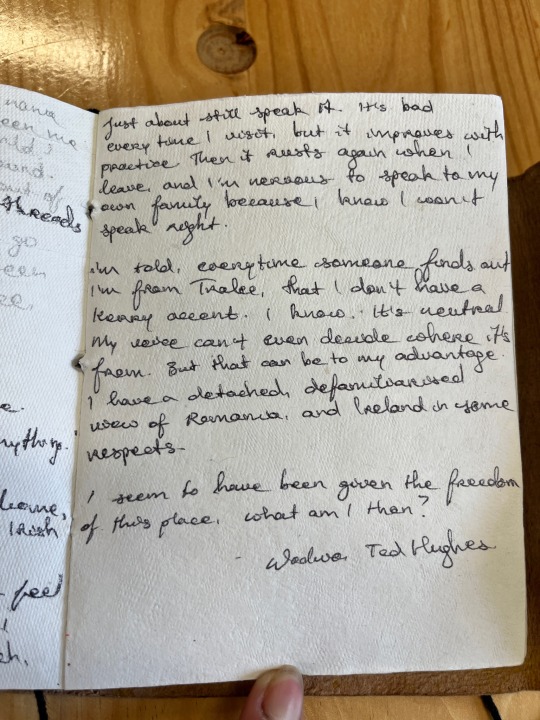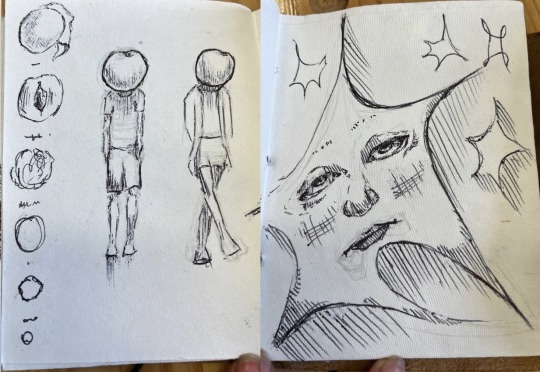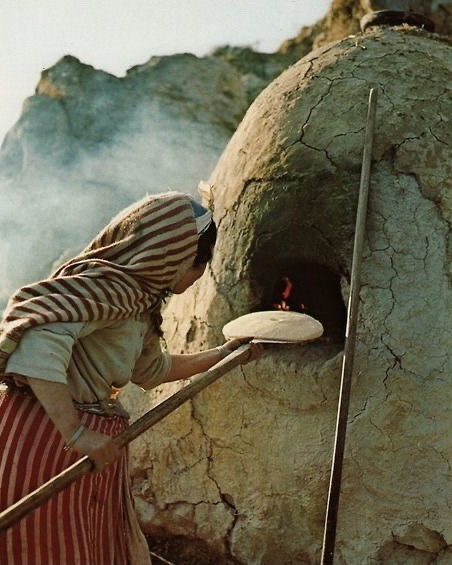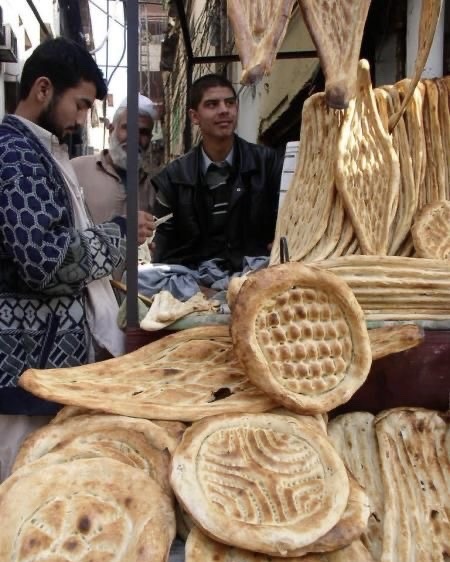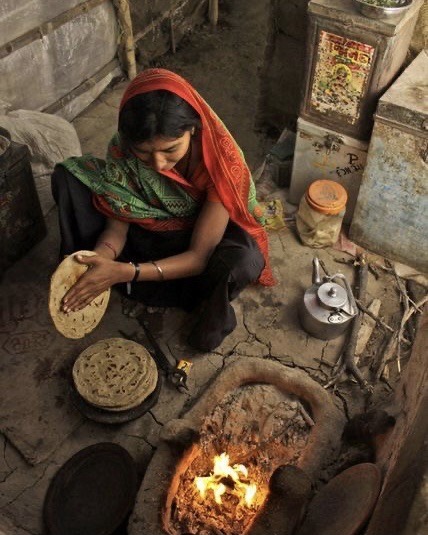Text
RAE KLEIN (b. 1995, USA)
“I’m very interested in like power, moments where you might feel powerful or powerless and the moments when that changes,” said Klein. “Now, I’m trying to say more with less. Can I just say one thing? Can this curtain have just as much power as my previous work?” - ArtNews




As I've explored in my little yellow sketchbook, I like the idea of reclaiming my lack of identity as a positive. I live in between and outside of Romanian and Irish tradition in a way. I see both as novel and curious, which is a great position to be in as an artist. I see the extraordinary in things that are commonplace to most people born and raised in either Ireland or Romania. I am welcomed in both cultures, its not a matter of exclusion, but I don't truly feel part of either. It's a strange in-between that I think would be fun to explore through paint.
Klein's visual language is appealing, obscure, yet clearly readable and she is a young artist who made her way into the art world without grad school. (always inspiring to see).
0 notes
Text
Artist Sketchbooks
I like looking at sketchbooks and seeing into the minds of artists, but also seeing how accessible their starting points are. Instead of focusing so much on the finished works of great artists which is quite daunting, it can be much more motivational to just look at their methods of getting started.
JMW Turner / landscapes, quick light marks


William Blake / note writing up the side of the page ?


Eugene Delacroix - watercolor skill
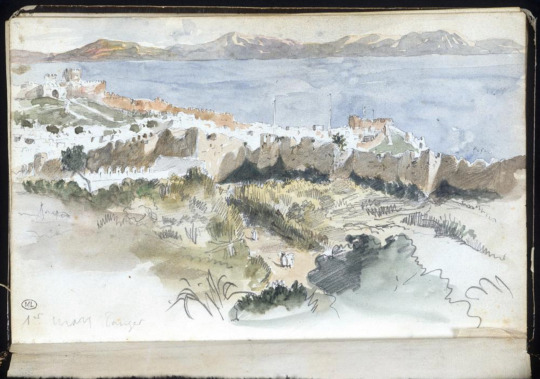

0 notes
Text
Note to self: George Robert Lewis sketchbook for figure references

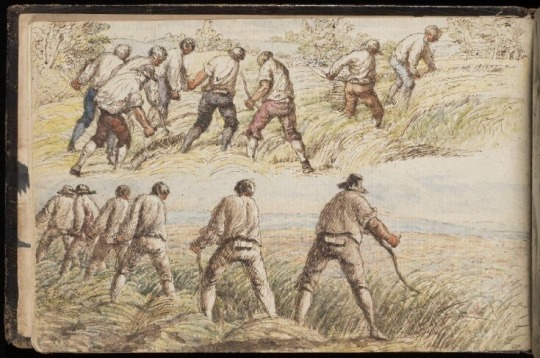
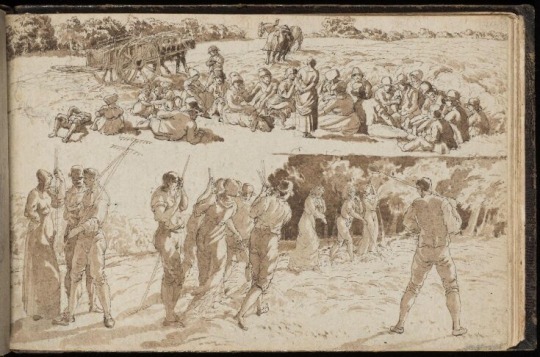
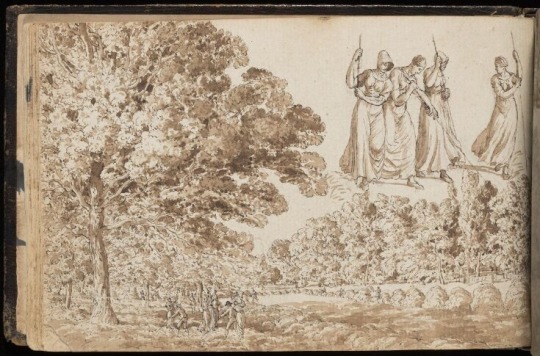
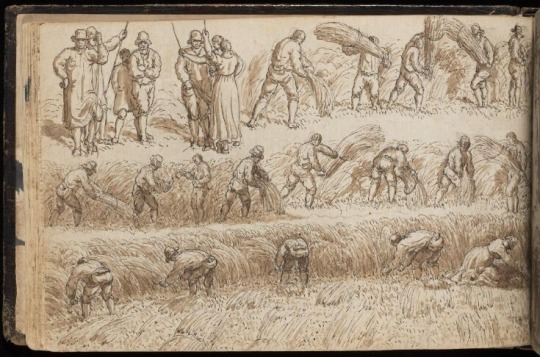
0 notes
Text
DANA SCHUTZ
"I think that that's an interesting way to begin a painting, in that it's something that's either difficult to depict or the painting is itself talking about a problem. I don't see that the painting offers a solution but that it begins to become a place where these problems can play out."
youtube
Come back to this when stuck for painting cues.
0 notes
Text
Amalgam - Year 3 Fine Art exhibition



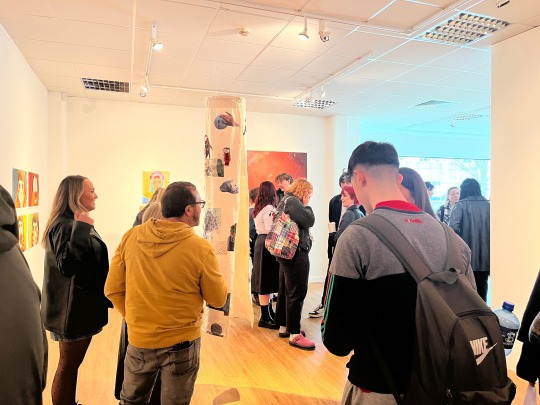
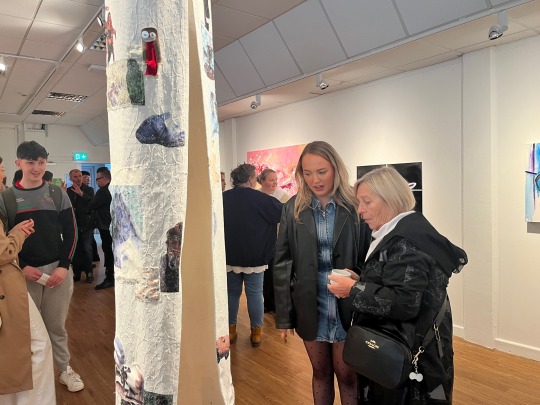



Very proud of the whole group, project managing was a joy with them :)
2 notes
·
View notes
Text
Helen Westgeest, Slow Painting. London: Bloomsbury, 2020.








Notes on propaganda in art were very interesting to me. What isn't propaganda today? All art can be deconstructed, redefined, reconstrued, especially in times of sociopolitical tension, as we have seen for a prolonged period recently.
Wang Guangyi's Great Criticism painting series criticises the aesthetics of Chinese social realism as well as Western commercialism.


(Work of Wang Guangyi)
The contrast of traditional images of Chinese communist propaganda against current dominant brands in the realm of consumerism create a striking visual image while leaving adequate space for contemplation - although the subject matter isn't at all elusive, it's still fun to look at. We are urged to question the propaganda we are fed every day in the form of billboards, posters and advertisements.
0 notes
Text
Dante's Divine Comedy
While painting my current work in progress, its resemblance to the second circle of hell was pointed out to me. I thought I'd research a bit of the Divine Comedy, particularly the Inferno to learn more about the subject. The second circle of hell represents lust, with a constant tempest buffeting those who gave in to carnal temptation.

Jean-Jacques Feuchère, Dante Meditating on the "Divine Comedy", 1843. https://www.nga.gov/collection/art-object-page.91288.html
Made with pen and a brown ink wash. Visual movement of his imagination through the space. His own battle between virtue and vice?

William Blake, The Circle of the Lustful: Paolo and Francesca, 1827. https://www.nga.gov/collection/art-object-page.8317.html
Rich allegory within the story, of course. What interests me about this story is its focus on knowing evil to be able to know good - couldn't climb the mountain of purgatory into heaven before going through hell. Then considered the circle of gluttony, how that links with ideas of excess and food and enjoyment, but I think that actually deviates more from my use of food than the second circle would. In my painting I have a figure eating whatever it has found, some ambiguous fruit. It started that way and I enjoy it, and I think it might take on some meaning in future, when the work is more resolved. For the moment, the figures are all crawling aimlessly, scavenging in vain for a life they'll never live again.

Gustave Doré, Dante and Virgil in the Ninth Circle of Hell, 1861. https://upload.wikimedia.org/wikipedia/commons/b/b7/Gustave_Doré_-_Dante_et_Virgile_dans_le_neuvième_cercle_de_l%27Enfer.jpg
I'm going back in history with my source material and it's far more exciting to me than contemporary research, just at the minute. I consider the fact that a lot of contemporary artists have sourced their inspiration in centuries-old art, and I think it's a valid thing to learn about before venturing back to modernity. That said, Francis Bacon has been a notable influence on me.

Eadweard Muybridge, Child with infantile paralysis walking on hands and feet, 1887. https://commons.wikimedia.org/wiki/File:Child_with_infantile_paralysis_walking_on_hands_and_feet_%28rbm-QP301M8-1887-539a~8%29.jpg

Francis Bacon, Paralytic Child Walking on All Fours (from Muybridge), 1961. https://www.francis-bacon.com/artworks/paintings/paralytic-child-walking-all-fours-muybridge
Bacon's use of paint and abstraction of the figure have been a source of consistent fascination and inquiry for me in my painting practice. This is currently coming together with the work of Dante, biblical stories, the poetry of Ted Hughes and others, and my focus on food as an allegorical device.
#art research#painting#art theory#poetry#dante#inferno#francis bacon#eadweard muybridge#gustave dore#William Blake
0 notes
Text
MM...FOOD by MF DOOM
I love music and I've already been discussing food, so this just makes sense to me.
MF DOOM's fifth album MM...FOOD is not just an anagram of his name, but acts as a signifier of the double entendre and food-related samples that proliferate the record.
There are plenty food related songs out there; mostly just title-wise (Frank Zappa's Watermelon in Easter Hay, Mayonaise by the Smashing Pumpkins, Rotten Apple by Alice in Chains, to name a few), but this album works with food-based sounds to formulate a cohesive collection of songs that don't necessarily base all their meanings in food, but grow from this rather simple source. There is definitely more out there that I plan to scout out.
Perhaps a discussion lies within this work, of theme as a method of producing work; which might be something to learn from as a painter - sometimes I feel very tied to a 'theme' or idea, forgetting that it's a springboard for future ideas to emerge from. This album is a stellar example of that free and permitted emergence.
0 notes
Text
Wayne Thiebaud (1920-2021, USA)
https://www.sfmoma.org/artist/Wayne_Thiebaud/
"Bay Area artist Wayne Thiebaud worked first as a graphic designer and cartoonist before beginning his painting career in the mid-1950s. He combined a number of interests then current in American art: thick, gestural brushwork, everyday subject matter, and commercial imagery.
Thiebaud is best known for his paintings of cakes, pies, and candies arranged in classic diner or cafeteria style. Thiebaud depicts these objects as commodities, their emphasis on appearance as much as taste. He achieved this effect through serial repetition, synthetic colors, and, famously, by painting with a knife, as if he were spreading the "frosting" onto his cakes. By focusing on sugary foodstuffs, Thiebaud updated the traditional still-life genre for the age of mass production and consumption." SFMOMA
Such a simple gesture as organising food aesthetically and commercially, and painting it, has proven to be a source of fruitful subtext and reflection. The still-life has moved on from what was then coveted; lobster; baskets overflowing with fresh bread; silver dishes laden with cheese and exotic fruits, to sugary confection.
Thiebaud brings attention to our shifting perspectives and treats our caloric fancies with the same reverence as the old Dutch Masters, with a typical mid-century American hand of heavy, loose brushstrokes and bright, sunlit colours.

Confections, 1962

Buffet, 1972-75
0 notes
Text
Romanian Symbols and Motifs
Balkan Vernacular Architecture
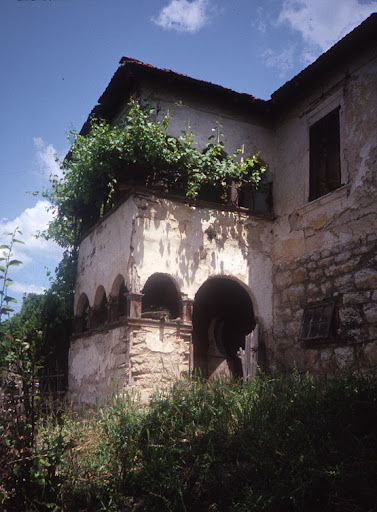



Bringing Romanian themes and motifs into work

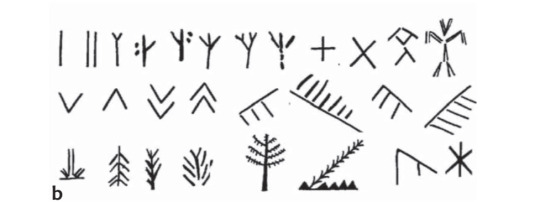
Virgil Vasiliescu, Civilizația Tisa, Bucharest: Editura Orfeu, 2000.

Romanian Middle Paleolithic <--> Ogham ?
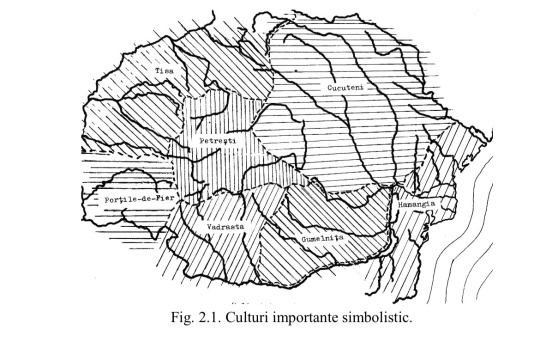
Outline of ancient Romanian cultural areas

Dacian ancient ideograms

today's motifs
0 notes
Text

Outdoors Breakfast - Elena Climent , 2022.
Mexican, b. 1955-
Oil on linen on bord, 17 3/4 x 11 in.
6K notes
·
View notes
Text
Artist Research: Claire Tabouret (b. 1981, France)
There's a luminosity to her work that I think is beautiful. It's something I've recently been working towards bringing out in my own work. Warm, convivial, eyecatching?




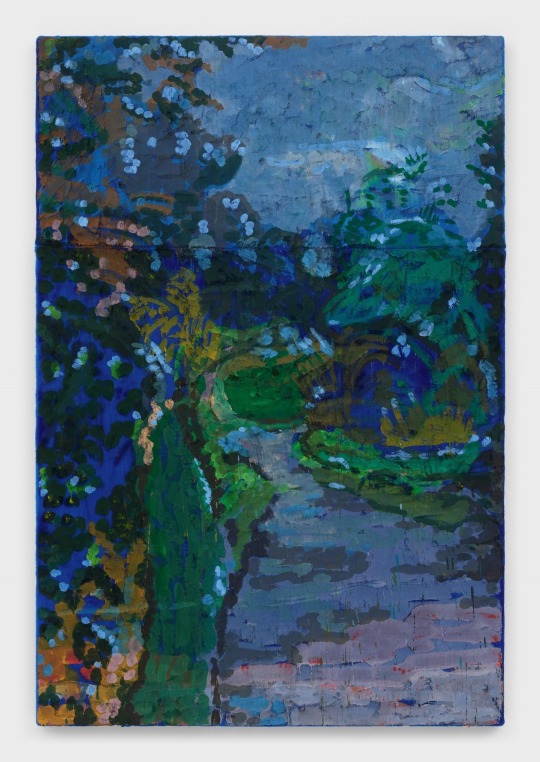
0 notes
Text
1 note
·
View note
Text
the whole point of life is being deeply moved by art. and bread
43K notes
·
View notes
Text
Podcast episode
Rirkrit Tiravanija on the Dave Chang Show
‘He was training to be a photojournalist, but after seeing two pieces of art, he changed his mind.’ Duchamp’s Fountain, Kazimir Malevich’s White on White, after Russian revolution
Begs the question of what constitutes art - How do you determine the value of something, how do you own the narrative of something?
First food piece he did was 1990 pad thai piece. New York.
Tiravanija mentions Duchamp’s origins and his need to ask himself why he exists, why in this condition (after first world war) thus finds context for readymades. Tiravanija: “You don’t need to have your own skill to think things… You can use your imagination.” 15:26 – 15:32
“Art is a place where you can ask a lot of questions” 16:08 – 16:12
conceptual structures, making things out of ideas, make a representation which is a representation of an idea – “meta-art” - A starting point for Tiravanija and the work he wants to express.
What is art, question asked all the time of oneself, as an artist. The same questions of ‘what is art’ apply to cooking, or eating, and they’re just asked more of art. They can be asked of everything. A good curry on the street is a good curry. Not just a high end restaurant. – implying that art, if it’s good, doesn’t need a setting? “the only thing that matters is how you feel about what you ate.” Dave Chang 18:19 – 18:24
“and that is where art is, is that moment where you can, having seen or done and experienced a lot of things, that there is a moment where you an say to yourself, ‘Wow, this is a really good bowl of noodles,’ compared to other things in the world, but you can’t compare it to other things in the world if you haven’t gone through it.” 18:43 – 19:02
“The urinal … isn’t about skill, it isn’t about illusions, it’s what it is. And what it is could be more about how you think about it.” 19:06 – 19:17. he sounds like a Boddhisatva. Ceci n’est pas une pipe vibe.
Taking down Western conventions around knowledge by questioning them. Reanimation of pots that were displayed in western museums, pots that he would have used, reclaiming.
19:50-20:18 “I started off in the Art Institute of Chicago looking at artefacts. It was all bowls and pottery and Buddhas, and I was like ‘But these are all things that I actually use in my daily life, and they’ve elevated it into an aesthetic object”
“You take that thing, which is their object, and you put your life into it.” 21:06 – 21:11 “We don’t sit around thinking about the object, we think about the people around it.”
21:40 – 21:50 “The beauty … is actually maybe the noodle, it’s maybe the cook who made the noodle, it may be the people who sat around and ate the noodle, but it’s definitely not the bowl”
Who’s assigning value to anything?
23:20 – 23:22 “You have to live through it”
Chang 23:22 – 23:30 “How do you live with the current critics that determine the value, then, of the art that you’re trying to take back?”
24:23 – 24:28 “I think we’ve opened ourselves up a lot more to understanding the other”
Kazimir Malevich, White on White. Suprematist art. 25:40 – 25:45 “The idea of an artist as a kind of spiritual being”
26:02 – 26:06 “It’s not even an image, it’s just an idea,” on Malevich’s work
The concept of relational aesthetics, but not to do with undermining the gallery space, just to use ideas in their rawest forms, not necessarily a skill-based thing. “The urinal was against the white on white.” Constructive opposition of ideas.
28:28 – 28:36 “I was looking at these potteries in the museums and … saying to myself ‘I gotta try to retrieve this back to myself … back to my own space.”
28:40 – 28:43 “Suddenly one day I just said to myself “I’m gonna cook, and use the pottery”
Part of a group show in SoHo
29:01 “The pot was boiling and people were just looking at it” realised that it was the same as looking at it in a museum
29:15 – 29:17 “The next show I made was pad thai…”
29:23 – 29:27 “I cooked until the last strand of noodle was gone.”
29:59 - 30:03 “my friends came and they saw that I was struggling and they started to help”
Gordon Matta-Clark’s Food, Alison Knowles’ Make a Salad
31:30 – 31:34 “THE OLDER CRITICS SAID … WHAT’S THE DIFFERENCE”
31:36 “She didn’t look at the wok I was using, she didn’t really think about what kind of noodle I was cooking” His work has a more cultural point and purpose than previous food works. Reclaiming his heritage and questioning its aestheticisation. Pad Thai was the only noodle dish invented by the Thais, politically by them, to have a national dish. Metaphors, pictures and layers. Now realising that the aim of tiravanija’s work was not actually a social awakening and buzzing of people to come together.
31:45 – 31:54 “I understood of course that it wasn’t anything new, but I knew that the layers of things within what I was doing was different.”
Chang asked, What do you do when your predecessors also staged something similar, and the critics who should know don’t appreciate the nuance and novelty of what you’re trying to do? 32:42 – 32:45 “Not being afraid as long as you know yourself.
35:10 “I used an electric wok because it was made by this company … this wok was in a video by an older video that I respect a lot…” reference to her work (who?) The west turning the east into a consumerist commodity. The east made into a product. Brought to attention by tiravanija’s use of an electric wok.
Using food
38:11 – 38:23 “How do you convince people to see what you want to see … how do you let more people be patient, and soak things in, and question their default setting?”
38:24 – 38:28 “I think that’s part of using food.”
38:34 – 38:41 “It is .. something you do three times a day, so it isn’t that out of your experience.”
In that way, there is a point where it’s open enough and more understandable.
“Even the art people didn’t see all those things.”
Tiravanija teaches at Columbia; rallying against what institutions do. Disrupting learning. No interest in teaching anyone anything. The shift from MFA of 12 students to 50 students. University wants to make money from artists.
56:21 – 56:44 “Do you think that food, because it’s so taken for granted, because everyone has to eat … can reveal so much more about an individual and a culture and a set of beliefs than people ever care to give credit to?”
[Yes]
Summer kitchen available Friday to Sunday – losing money. Finding a way to fund it by doing something else; selling art. You make stupid sandcastles everyday that people shit out – culinary art – Dave Chang
ART COOKBOOK https://www.amazon.co.uk/Rirkrit-Tiravanija-Cook-Antoinette-Aurell/dp/6167339066
A cookbook of his food-based art, and the recipes for the food involved.
0 notes
